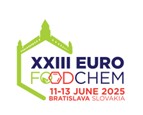Scientific journal
Journal of Food and Nutrition Research
Summary No. 2 / 2017
Tarko, T. – Duda-Chodak, A. – Sroka, P. – Satora, P. –
Diversity and bioavailability of fruit polyphenols
Journal of Food and Nutrition Research, 56, 2017, No. 2, s. 167-178
Tomasz Tarko, Department of Fermentation Technology and Technical Microbiology, Faculty of Food Technology, University of Agriculture in Krakow, ul. Balicka 122, 30-149 Krakow, Poland. Tel.: +48126624792, fax: +4812 6624798, e-mail: t.tarko@ur.krakow.pl
Received 19 January 2017; 1st revised 9 March 2017; accepted 10 April 2017; published online 18 May 2017
Summary: The aim of the study was to evaluate changes of phenolic compounds of eight fruit types during digestion in the simulated human digestive tract. Significant differences in antioxidant activity and the content of polyphenols were found among species. All fractions obtained after in vitro digestion demonstrated lower content of polyphenols than in fruits. Antioxidant activity of supernatants after digestion was usually higher than antioxidant activity of the plant material before digestion. Moreover, migration rate of phenolic compounds through dialysis membrane depended on the fruit species. Chokeberry and elderberry are good sources of antioxidants. Polyphenols absorbed in the digestion tract after their consumption demonstrated high antioxidant potential. Biotransformation of phenolic compounds by the intestinal microbiota mostly depends on the content and profile of those compounds. Solid residues of bilberry fruit remaining after microbial fermentation showed the highest polyphenol content and antioxidant activity.
Keywords: antioxidant activity; polyphenolic compounds; in vitro model; digestion; bioavailability; fruits
Download:
(pdf, 301.66 Kb, 2569x)










